Number 742 - Paul Simon

Number 742
Paul Simon
"Call Me Al"
(1986)
Paul Simon
"Call Me Al"
(1986)
Genre:Pop
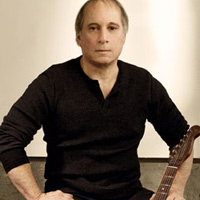 In a career dating back to the 1950s, Paul Simon has established himself among the best and most popular songwriters of the rock era. Growing up in Queens, NY, Simon befriended schoolmate Art Garfunkel, who had an angelic tenor voice, and the two teamed up as Tom & Jerry, taking the names of the cartoon characters. In the winter of 1957-1958, they scored a chart hit with "Hey Schoolgirl"; both were 16 years old. Simon continued to try to score hits in the late '50s and early '60s, reaching the charts briefly in 1962 in the group Tico & the Triumphs with "Motorcycle" and under the name Jerry Landis in 1963 with "The Lone Teen Ranger." He and Garfunkel teamed up again as a folk duo in Greenwich Village, signed to Columbia Records, and released Wednesday Morning, 3 AM (October 1964). The album flopped initially, but Simon, who had been spending a lot of time in England, was picked up as a solo artist by CBS and recorded The Paul Simon Songbook, released only in Great Britain in the spring of 1965.
In a career dating back to the 1950s, Paul Simon has established himself among the best and most popular songwriters of the rock era. Growing up in Queens, NY, Simon befriended schoolmate Art Garfunkel, who had an angelic tenor voice, and the two teamed up as Tom & Jerry, taking the names of the cartoon characters. In the winter of 1957-1958, they scored a chart hit with "Hey Schoolgirl"; both were 16 years old. Simon continued to try to score hits in the late '50s and early '60s, reaching the charts briefly in 1962 in the group Tico & the Triumphs with "Motorcycle" and under the name Jerry Landis in 1963 with "The Lone Teen Ranger." He and Garfunkel teamed up again as a folk duo in Greenwich Village, signed to Columbia Records, and released Wednesday Morning, 3 AM (October 1964). The album flopped initially, but Simon, who had been spending a lot of time in England, was picked up as a solo artist by CBS and recorded The Paul Simon Songbook, released only in Great Britain in the spring of 1965. 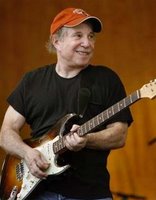 In the wake of the folk-rock trend prevalent that year, producer Tom Wilson took the acoustic track "The Sound of Silence" from the Wednesday Morning album, overdubbed electric guitar, bass, and drums and released the result as a single in October 1965, a full year after the album's release. It took off and hit number one, establishing Simon & Garfunkel. For the next five years, they were one of the most successful acts in pop music. Simon wrote the songs, and the two harmonized on a series of hit singles and albums. They split up in 1970, after the release of their most popular album, Bridge Over Troubled Water. (See Number 964)
In the wake of the folk-rock trend prevalent that year, producer Tom Wilson took the acoustic track "The Sound of Silence" from the Wednesday Morning album, overdubbed electric guitar, bass, and drums and released the result as a single in October 1965, a full year after the album's release. It took off and hit number one, establishing Simon & Garfunkel. For the next five years, they were one of the most successful acts in pop music. Simon wrote the songs, and the two harmonized on a series of hit singles and albums. They split up in 1970, after the release of their most popular album, Bridge Over Troubled Water. (See Number 964) 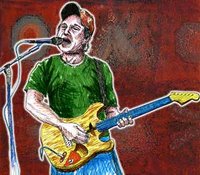 Simon returned to solo work with Paul Simon (January 1972), which could not hope to match the success of Bridge, but which did sell a million copies and featured the reggae-tinged Top Ten single "Mother and Child Reunion." There Goes Rhymin' Simon (May 1973) was another million-seller, containing the hits "Kodachrome" and "Loves Me Like a Rock." After a 1974 live album, Simon released Still Crazy After All These Years (October 1975), which topped the charts, won the Grammy for Album of the Year, and included the number one hit "50 Ways to Leave Your Lover."
Simon returned to solo work with Paul Simon (January 1972), which could not hope to match the success of Bridge, but which did sell a million copies and featured the reggae-tinged Top Ten single "Mother and Child Reunion." There Goes Rhymin' Simon (May 1973) was another million-seller, containing the hits "Kodachrome" and "Loves Me Like a Rock." After a 1974 live album, Simon released Still Crazy After All These Years (October 1975), which topped the charts, won the Grammy for Album of the Year, and included the number one hit "50 Ways to Leave Your Lover." Simon took his time following this success, though he did release a greatest-hits album featuring a new hit, "Slip Slidin' Away," and contributed to a remake of "What a Wonderful World" with Garfunkel and James Taylor. Moving to Warner Bros. Records, he wrote and starred in the film One Trick Pony (August 1980), the soundtrack of which contained the Top Ten hit "Late in the Evening."
Another three years passed before Simon returned with Hearts and Bones (October 1983), which did not match his usual level of commercial success. Simon experimented with songwriting styles and became interested in South African music, resulting in Graceland (August  1986), which became his biggest-selling solo album and won him another Album of the Year Grammy. Four years later, he delivered The Rhythm of the Saints (October 1990), which did for Brazilian music what Graceland had done for South African music and was another multi-platinum seller. Simon played a free concert in Central Park in August 1991 (ten years after Simon & Garfunkel had done one) and released a live album from the show. In 1993, Warner Bros. released a box set retrospective on Simon's career, and he undertook a tour that featured Garfunkel on their old hits, as well as covering other aspects of his career. He spent the next several years writing a stage musical, +The Capeman, and released his own version of its score as Songs from the Capeman (November 1997). The show, which starred Rubén Blades and Marc Anthony, opened on Broadway in early 1998 and was a quick failure. In 1999, Simon toured on a double bill with Bob Dylan. His next album, You're the One, was released in October 2000. It went gold and earned a Grammy nomination for Album of the Year. In 2006 Simon released Surprise, a collection of new material featuring three songs written with Brian Eno. ~ [William Ruhlmann]
1986), which became his biggest-selling solo album and won him another Album of the Year Grammy. Four years later, he delivered The Rhythm of the Saints (October 1990), which did for Brazilian music what Graceland had done for South African music and was another multi-platinum seller. Simon played a free concert in Central Park in August 1991 (ten years after Simon & Garfunkel had done one) and released a live album from the show. In 1993, Warner Bros. released a box set retrospective on Simon's career, and he undertook a tour that featured Garfunkel on their old hits, as well as covering other aspects of his career. He spent the next several years writing a stage musical, +The Capeman, and released his own version of its score as Songs from the Capeman (November 1997). The show, which starred Rubén Blades and Marc Anthony, opened on Broadway in early 1998 and was a quick failure. In 1999, Simon toured on a double bill with Bob Dylan. His next album, You're the One, was released in October 2000. It went gold and earned a Grammy nomination for Album of the Year. In 2006 Simon released Surprise, a collection of new material featuring three songs written with Brian Eno. ~ [William Ruhlmann]
 1986), which became his biggest-selling solo album and won him another Album of the Year Grammy. Four years later, he delivered The Rhythm of the Saints (October 1990), which did for Brazilian music what Graceland had done for South African music and was another multi-platinum seller. Simon played a free concert in Central Park in August 1991 (ten years after Simon & Garfunkel had done one) and released a live album from the show. In 1993, Warner Bros. released a box set retrospective on Simon's career, and he undertook a tour that featured Garfunkel on their old hits, as well as covering other aspects of his career. He spent the next several years writing a stage musical, +The Capeman, and released his own version of its score as Songs from the Capeman (November 1997). The show, which starred Rubén Blades and Marc Anthony, opened on Broadway in early 1998 and was a quick failure. In 1999, Simon toured on a double bill with Bob Dylan. His next album, You're the One, was released in October 2000. It went gold and earned a Grammy nomination for Album of the Year. In 2006 Simon released Surprise, a collection of new material featuring three songs written with Brian Eno. ~ [William Ruhlmann]
1986), which became his biggest-selling solo album and won him another Album of the Year Grammy. Four years later, he delivered The Rhythm of the Saints (October 1990), which did for Brazilian music what Graceland had done for South African music and was another multi-platinum seller. Simon played a free concert in Central Park in August 1991 (ten years after Simon & Garfunkel had done one) and released a live album from the show. In 1993, Warner Bros. released a box set retrospective on Simon's career, and he undertook a tour that featured Garfunkel on their old hits, as well as covering other aspects of his career. He spent the next several years writing a stage musical, +The Capeman, and released his own version of its score as Songs from the Capeman (November 1997). The show, which starred Rubén Blades and Marc Anthony, opened on Broadway in early 1998 and was a quick failure. In 1999, Simon toured on a double bill with Bob Dylan. His next album, You're the One, was released in October 2000. It went gold and earned a Grammy nomination for Album of the Year. In 2006 Simon released Surprise, a collection of new material featuring three songs written with Brian Eno. ~ [William Ruhlmann]For James Taylor see Number 820
For Bob Dylan see Number 491, #841 & #929
For Simon & Garfunkel see Number 964
For Art Garfunkle see Number 682  Crowbarreds choice for Website to find more on Paul Simon ... Click on the address http://paul.simon.org/
Crowbarreds choice for Website to find more on Paul Simon ... Click on the address http://paul.simon.org/
For Marc Anthony see MM Vol 1 #113
When Simon and Garfunkel broke up in 1970, the custody battle was simple. Art Garfunkel got the voice, the hair, and the honor of starring in Sherilyn Fenn's finest film, Boxing Helena. Paul Simon got the songs. He is America's favorite poet of New York alienation, dabbling stylistically in a variety of Third World and Tin Pan Alley genres. He can write brilliant songs in his snide mode ("Me and Julio Down by the Schoolyard") or his sad mode ("Slip Slidin' Away") and enjoy massive success either way. When Simon's off his game, his fussy approach can sound belabored and self-defeating--he's never developed a signature beat of his own. But when he's on--Paul Simon, Still Crazy After All These Years, Graceland--he's an inspired wit, doing for Manhattan what Steely Dan did for L.A..~ [Source: Rolling Stone]
 Crowbarreds choice for Website to find more on Paul Simon ... Click on the address http://paul.simon.org/
Crowbarreds choice for Website to find more on Paul Simon ... Click on the address http://paul.simon.org/Rolling Stone Top 500 Songs ranked this song at Number (We prefer Graceland) and the album ranked at 81
This song has a crowbarred rating of 66.5 out of 108
Paul Simon - You Can Call Me Al
Uploaded by manon42
Paul Simon - You Can Call Me Al
Uploaded by manon42
Search by Genre: ALT POP-ALT PUNK-ALT ROCK-ALTERNATIVE-BIZARRE-BLUES-BRIT POP-COMEDY-COUNTRY-CROONER-DANCE-DISCO-DO WOP-ELECTRONIA-FOLK SINGER-FOLK ROCK-FUNK-GARAGE ROCK-GLAM ROCK-GOSPEL-GRUNGE-GUITARIST-HAIR ROCK-HARD ROCK-HIP HOP-INDIE POP-INDIE ROCK-INDUSTRIAL ROCK- INSTRUMENTAL-JAZZ-LAZY SUNDAY-NEW WAVE-NU ROCK-POP-POP ROCK-PROG ROCK-PSYCHEDELIC ROCK-PUNK POP-PUNK ROCK-R&B-RAP-REGGAE-ROCK-ROCK N ROLL-SINGER SONGWRITER-SKA ROCK-SKIFFLE-SOFT ROCK-SOUL-SOUTHERN ROCK-SURF ROCK-SYNTH POP-TENOR-VOCAL
By The Year 1955 to 2005:
1955, 1956, 1957, 1958, 1959, 1960, 1961, 1962, 1963, 1964, 1965, 1966, 1967, 1968, 1969, 1970, 1971, 1972, 1973, 1974, 1975, 1976, 1977, 1978, 1979, 1980, 1981, 1982, 1983, 1984, 1985, 1986, 1987, 1988, 1989, 1990, 1991, 1992, 1993, 1994, 1995, 1996, 1997, 1998, 1999, 2000, 2001, 2002, 2003, 2004, 2005

underlay trademe
Labels: Paul Simon 742



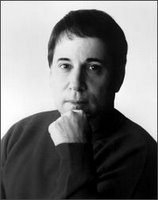






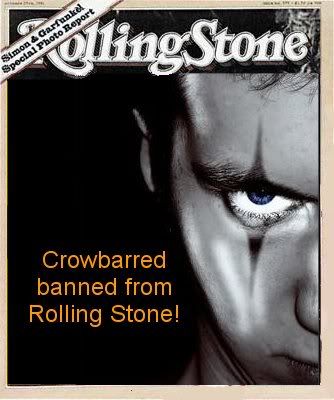








0 Comments:
Post a Comment
<< Home